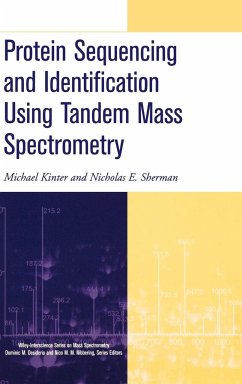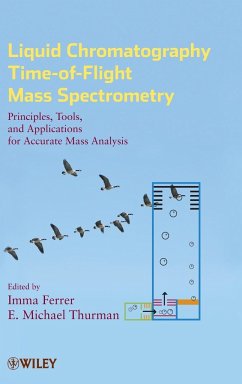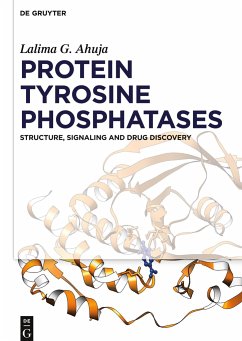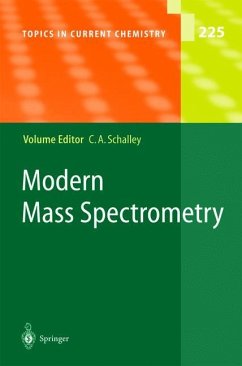
Mass Spectrometry Analysis for Protein-Protein Interactions and Dynamics
Versandkostenfrei!
Versandfertig in über 4 Wochen
122,99 €
inkl. MwSt.

PAYBACK Punkte
61 °P sammeln!
A how-to guide that helps you take advantage of the latest mass spectrometry methodsThis book brings together and examines the latest mass spectrometry methods used to investigate proteins, including structural mechanisms, protein dynamics, and interactions among proteins. Written by a team of experts with many years of hands-on experience developing and working with mass spectrometry methods, the book offers a wealth of practical advice and tips to help readers fully exploit the capabilities of a mass spectrometer.The book begins with an overview of mass spectrometry technologies, including a...
A how-to guide that helps you take advantage of the latest mass spectrometry methods
This book brings together and examines the latest mass spectrometry methods used to investigate proteins, including structural mechanisms, protein dynamics, and interactions among proteins. Written by a team of experts with many years of hands-on experience developing and working with mass spectrometry methods, the book offers a wealth of practical advice and tips to help readers fully exploit the capabilities of a mass spectrometer.
The book begins with an overview of mass spectrometry technologies, including an expert forecast of future directions. Next, the authors offer step-by-step guidance for such topics as:
_ Complementary methods for structure determination: hydroxyl radical-mediated footprinting and deuterium exchange mass spectrometry as applied to serpin structure
_ Covalent labeling methods for examining protein structure and protein interactions
_ Computational approaches to examine protein-protein interactions: combining experimental and computational data in the era of structural genomics
_ Two approaches to mass spectrometric protein footprinting: PLIMSTEX and FPOP
_ Hydrogen/deuterium exchange studies of viruses
Carefully edited, the book presents a uniform standard of high quality and thoroughness throughout all the chapters. References to the literature enable readers to explore each individual topic in greater depth.
Any researcher seeking to advance his or her own protein research will benefit from this book's insights and how-to guidance. The spectrometry methods can be applied to support investigations in such fields as biomedicine, biotechnology, and pharmaceutical research.
This book brings together and examines the latest mass spectrometry methods used to investigate proteins, including structural mechanisms, protein dynamics, and interactions among proteins. Written by a team of experts with many years of hands-on experience developing and working with mass spectrometry methods, the book offers a wealth of practical advice and tips to help readers fully exploit the capabilities of a mass spectrometer.
The book begins with an overview of mass spectrometry technologies, including an expert forecast of future directions. Next, the authors offer step-by-step guidance for such topics as:
_ Complementary methods for structure determination: hydroxyl radical-mediated footprinting and deuterium exchange mass spectrometry as applied to serpin structure
_ Covalent labeling methods for examining protein structure and protein interactions
_ Computational approaches to examine protein-protein interactions: combining experimental and computational data in the era of structural genomics
_ Two approaches to mass spectrometric protein footprinting: PLIMSTEX and FPOP
_ Hydrogen/deuterium exchange studies of viruses
Carefully edited, the book presents a uniform standard of high quality and thoroughness throughout all the chapters. References to the literature enable readers to explore each individual topic in greater depth.
Any researcher seeking to advance his or her own protein research will benefit from this book's insights and how-to guidance. The spectrometry methods can be applied to support investigations in such fields as biomedicine, biotechnology, and pharmaceutical research.












